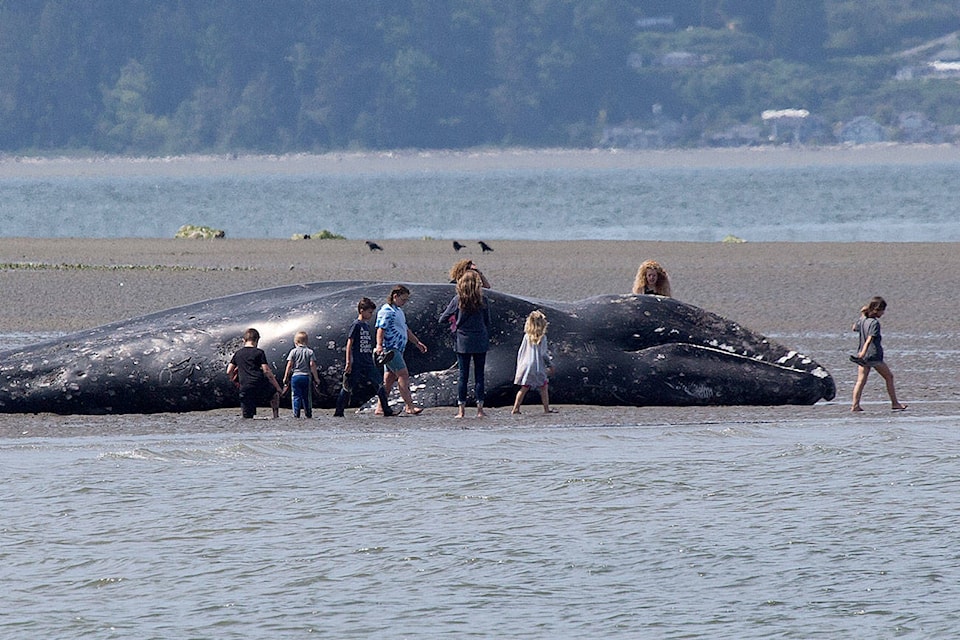Officials planned to tow away the carcass of a whale that washed up onto a beach in Washington State this week.
Beachgoers gathered around a 43-foot-long grey whale that washed ashore on Sunday near Haborview Park in Everett.
READ MORE:
The Everett Police Department and the state Department of Fish and Wildlife planned to have it towed at high tide on Tuesday to Camano Island, where it will be left to decompose, said Michael Milstein, a spokesperson for the National Oceanic and Atmospheric Administration.
Authorities hope to examine the whale later this week and determine its age, gender and cause of death.
Debbie Ritchhart spotted it from her living room window around 12:30 p.m. Sunday. Worried the whale might still be alive and struggling to breathe, she called 911.
| Elizabeth Humphrey assists Brian Ritchhart, centre, as he measures a dead grey whale washed ashore near Harborview Park on Sunday, May 5, 2019 in Everett, Wash. (Julia-Grace Sanders/The Herald) |
The next day, her husband, Brian Ritchhart, went to the beach with a measuring tape to gather the mammal’s length.
“We’ve been here 30 years and this has never happened before,” he said.
The whale was still beached on the flats Monday afternoon, allowing humans to get a better look at low tide.
This is the 13th grey whale to wash ashore in Washington this year, Milstein said. Last year at this time, there had been three or four.
But as a whole, Milstein said the grey whale population is doing very well. About 27,000 migrate along the West Coast.
| Brian Ritchhart walks around a dead grey whale washed ashore near Harborview Park on Sunday, May 5, 2019 in Everett, Wash. (Julia-Grace Sanders / The Herald) |
“Overall, the population is healthy. But when you have a large population like this, it can be more sensitive to changes in the environment.”
Another dead whale was found at Cape Disappointment on Saturday, about 325 kilometres south down the coast, at the edge of the border with Oregon.
Orca Network co-founder Susan Berta said photos show this latest whale looks emaciated.
“What we’re seeing is [the dying whales] not getting enough food in the Bering Sea last summer.”
About 12 whales stop in North Puget Sound annually to feed on their way north, she said. They’re usually here from March through the end of May.
READ MORE:
“When there isn’t enough food up north is when we get newcomers to our little group,” Berta said. “So we’re waiting to see what happens.”
Like us on and follow us on



